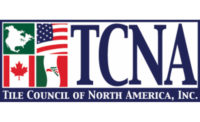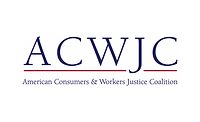China Tariffs Halted at 10%: ACWJC Responds

Washington, D.C. -- President Trump and China President Xi Jinping have agreed to halt trade tariffs at the 10% rate, and not raise them to 25% on January 1, 2019. The leaders met at a post-G20 meeting in Buenos Aires over the weekend.
“This was an amazing and productive meeting with unlimited possibilities for both the United States and China,” President Trump stated. “It is my great honor to be working with President Xi.”
On trade, President Trump has agreed that on January 1, 2019, he will leave the tariffs on $200 billion worth of product at the 10% rate, and not raise it to 25% at this time. China will agree to purchase a not yet agreed upon amount of agricultural, energy, industrial, and other product from the United States to reduce the trade imbalance between our two countries. China has agreed to start purchasing agricultural product from our farmers immediately, according to statement from the U.S. press secretary.
President Trump and President Xi have agreed to immediately begin negotiations on structural changes with respect to forced technology transfer, intellectual property protection, non-tariff barriers, cyber intrusions and cyber theft, services and agriculture. Both parties agree that they will endeavor to have this transaction completed within the next 90 days. If at the end of this period of time, the parties are unable to reach an agreement, the 10% tariffs will be raised to 25%.
A strong voice against the imposition of up to 25% tariffs on Chinese flooring imports was in full force in Washington as the American Consumers & Workers Justice Coalition (ACWJC) met with senators, congressmen and their staffs in Washington last week regarding the Chinese tariffs in general and their potential effect upon the flooring industry in particular. The coalition effort was led by Harlan Stone, founder of the ACWJC and president of the Multilayer Flooring Association (MFA).
According to Stone, the voice of the ACWJC was heard. “We believe that fair and equitable trade is the foundation of how nations should interact. On Saturday our President took an important step in this direction. As we have said repeatedly, we believe the hard-working people in Washington, D.C. can and will forge a new, robust and equitable trading architecture with China, and they will not punish Americans along the way. We can win the negotiation, and we can avoid a costly and protracted trade war. We have asked to be treated fairly and to allow businesses in the flooring industry to continue to flourish, to grow, to employ more people, to invest more money, and to drive the flooring industry forward. And this is now our reality.”
The overwhelming majority of elected officials in Washington the Coalition met with last week are opposed to increasing tariffs from 10% to 25%, Stone said. Virtually every meeting (over 95% of them) ended with an understanding that LVT should be excluded from the entire tariff process and that should be done through an exclusion process. Many members of Congress had either already publicly declared or are willing to stand up on behalf of the ACWJC to explain why an exemption process is necessary and why delaying the implementation for any increased tariffs is essential to continued economic expansion. It appears they made their point.
“Their doors are open, and they are willing to listen to their constituents,” said Stone. “They need to hear from business owners, voters, and associations in their districts to understand the real-life impact of the proposed tariff increase. They were very appreciative that we made them aware of these issues, and they strongly encouraged us to get our coalition members to speak out more and often.”
Concluded Stone, “Our voices were heard. We need to continue to participate in the process and be very proud that we live in a country that allows its citizens to come to our nation’s capital and talk directly to the elected officials who represent our interests. This is our privilege and our duty as informed citizens, and this what our Founding Fathers envisioned for this great nation.”
For more information, visit www.whitehouse.gov.
Looking for a reprint of this article?
From high-res PDFs to custom plaques, order your copy today!





